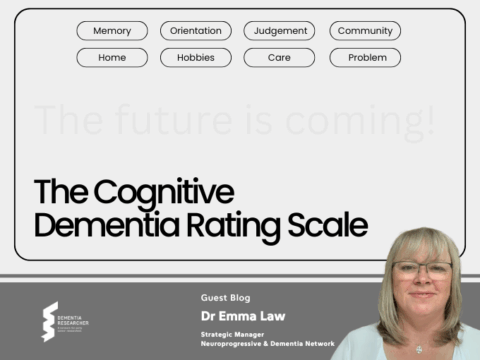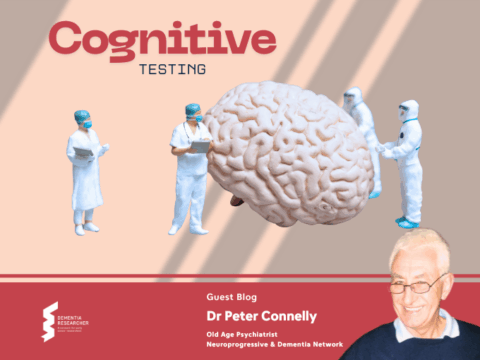The prevalence of dementia is growing, making it a significant public health priority in the UK. Dementia is projected to be the highest costing health condition by 2030 – whereby the estimated cost of dementia in the UK was £25 billion in 2021 and is expect to almost double to £47 billion by 2050. This all sounds very stark and is a serious consideration for sure, but have you ever wondered what exactly is being considered when you hear these figures and statistics? What do these costs relate to exactly…? In this blog I’ll be doing my best to explain exactly that.
Economic burden
The economic burden of dementia is wider than healthcare alone, including both direct and indirect costs which I will discuss shortly. But just to explain that direct and indirect costs are 2 distinct classes of expenses that can be used in economic evaluations and other costing studies. The key difference is that direct costs are directly attributed to specific services or activities, and they are typically considered to be traceable. Whereas indirect costs are not directly traceable or specifically related to products or services. They are sometimes referred to as overhead costs and can take a semi-variable format, unlike direct costs which are typically fixed. Health economic evaluations in the UK may aim to consider both types of costs where possible, but there is a general greater emphasis on direct costs. Some studies may make additional efforts to capture indirect costs such as caregiver time; as treatment are assessed via their costs and benefits, it’s also important that any indirect benefits a treatment may give are also then captured. These are sometime referred to as “spillovers”, and I have linked a really good reference for anyone interested in reading about these.
Al-Janabi, Hareth, et al. “A framework for including family health spillovers in economic evaluation.” Medical Decision Making 36.2 (2016): 176-186.
Direct costs of dementia
The direct costs of dementia can be significant upon both individuals and the NHS. I will not enlist all types of direct costs here today, but I will provide a few examples:
- Pharmacological treatments: While dementia patients will typically be eligible for free prescriptions, these prescription charges are costly to the NHS. For example, the commonly prescribed AChE inhibitor Donepezil costs ~£60 for 28 x 5mg tablets, and ~£84 for 28 x 10mg tablets. It’s also important to note that these treatments are often not taken in isolation
- Hospital stays: A bed day on a general ward in hospital costs the NHS ~£590/day
- Care: PlwD may receive in-home support such as medical monitoring and professional support carers, or they may indeed require long-term care such as in nursing homes or assisted living facilities
Indirect costs of dementia
While the direct costs may have been more obvious, indirect costs may appear to be slightly more discrete, for example:
- Informal caregiver burden: Family members and friends often provide unpaid care and support. If we were to estimate the “opportunity cost” of their time, or indeed potential loss of wages (resulting from reduced working hours as a result of their care) – this type of indirect cost would surpass that of all formal care and would bankrupt the NHS
- Wider social costs: Dementia impacts the individuals and their families, but also communities and society as a whole, including the cost of community programmes, support services, and public health campaigns for raising awareness and providing assistance
Resource allocation for Dementia
How the government spends money on dementia in the UK is a key player in the country’s health and social care strategy. Funding is allocated for different elements of dementia – such as funding research, diagnostic services, support for PlwD and caregivers alike. The UK government also aids in financing long-term care for those that cannot self-fund, and it’s important that robust economic analyses are conducted and considered by decision makers when making resource allocation decisions. Essentially, resources are finite – meaning money that is spent on one treatment area may place strain on another.
The role of research and innovation
Research and advancements in the area of dementia economic are important and hold the promise of not only potentially alleviating economic burden but also improving the quality of life (QoL) of those affected. This research may be scientific e.g., investigating early diagnosis, prevention, and medical treatments; these types of breakthroughs could potentially reduce long-term dementia care costs. Social research may drive non-pharmacological developments for PlwD and caregivers alike, improving QoL and leading to cost-effective strategies to managing dementia.
Future outlook
Overall, the future outlook of the economics of dementia is simultaneously promising and daunting. The economic burden of dementia is projected to increase in the years to come and there will be larger demands on the NHS, care facilities and support services. Indirect costs related to caregiver burden are going to continue impacting families and society as a whole. However, there is also hope! Ongoing research and innovations could potentially alleviate the long-term costs of dementia management. Heightened awareness and policy developments aiming to better support PlwD and their caregivers can have a positive impact on the economic outlook as well as QoL more immediately. A broad approach that values research, policy, and community interest is key for creating a more compassionate and sustainable future for those affected by dementia.

Hannah Hussain
Author
Hannah Hussain is a PhD Student in Health Economics at The University of Sheffield. As a proud third generation migrant and British-Asian, her career path has been linear and ever evolving, originally qualifying as a Pharmacist in Nottingham, then Health Economics in Birmingham. Her studies have opened a world into Psychology, Mental Health and other areas of health, and with that and personal influences she found her passion for dementia.

 Print This Post
Print This Post




